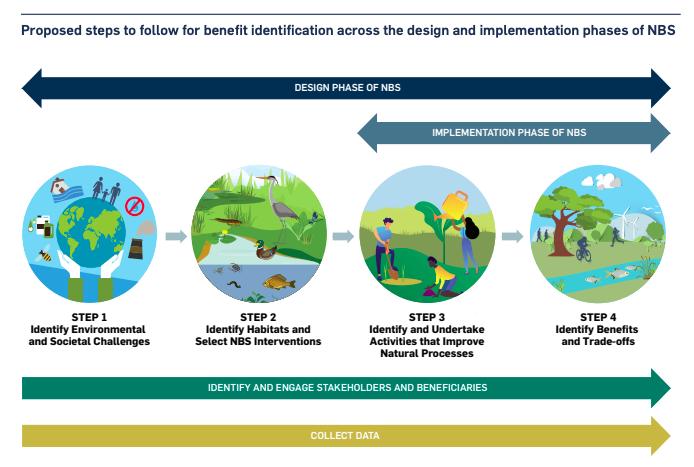Primary Functions
- Find guidance on identifying and measuring the multiple benefits accruing from NBS investments.
Detailed Description
Nature-based solutions (NBS) have the potential to combat pressing global problems, including climate change, water security and biodiversity loss. This guide builds on Benefit Accounting of Nature-Based Solutions for Watersheds Landscape Assessment (Shiao et al., 2020), which highlights the barriers for businesses to implement NBS at a large scale. The primary challenge for corporations is that there is no standardized method to identify, estimate and monitor the benefits that NBS can provide, making it hard to build the case for investments in these solutions.
To tackle this challenge and help companies accelerate NBS implementation, this guide provides a starting point to identify and measure the multiple benefits accruing from NBS investments. The guide indicates which specific NBS activities can be implemented in various habitats and suggests methods for measuring the benefits. A multi-stakeholder project team, including the CEO Water Mandate, Pacific Institute, The Nature Conservancy, Danone and LimnoTech, developed the guide. An expert advisory group, comprising members of governments, the private sector, academia, non-governmental organizations (NGOs) and funding and financing institutions, provided additional strategic and technical input.
Accounting for NBS benefits will improve a company’s impact monitoring and help build the business case for these “green” solutions, thereby supporting widespread implementation. Specifically, the guide helps users account for and measure the stacked water, carbon and biodiversity benefits, as well as additional socio-economic benefits. The aim of this work is to increase the overall awareness of the value of NBS and increase investments in NBS, not only for ecosystem health and community development, but also for businesses directly. Overall, NBS help companies reach corporate sustainability goals, regulatory compliance and a financial return on investment.






